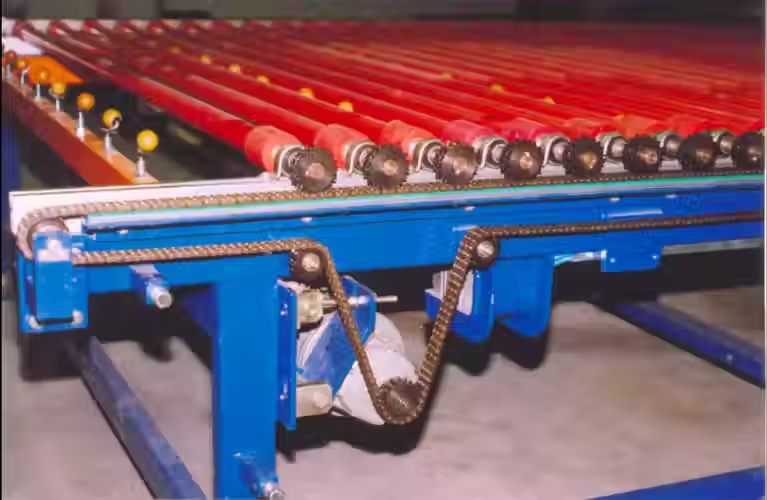Belt Conveyors
- Jaswanth srinivas
- Sep 14, 2024
- 3 min read
Belt Conveyors
Introduction to Belt Conveyors
Belt conveyors are one of the most widely used mechanical systems in industries for transporting materials. They are essential for automating processes and moving items efficiently over varying distances. A belt conveyor system comprises two or more pulleys (also called drums) with a continuous loop of material (the conveyor belt) that rotates around them. These conveyors are highly versatile, being used in various sectors such as manufacturing, mining, logistics, food processing, and more.
Key Features of Belt Conveyors
Belt conveyors are known for their adaptability and cost-efficiency. They can be custom-designed to meet specific operational needs, making them a valuable asset in many industrial applications. Here are some key features:
Material Handling Capability: Belt conveyors can move a variety of materials, from fine powders to bulky items. This makes them indispensable in industries such as mining, where raw materials like coal, ore, or gravel need to be transported.
Durability and Reliability: Most belt conveyors are built with robust materials like rubber, fabric, or metal that are resistant to wear and tear, making them reliable over long periods.
Energy Efficiency: Advanced designs allow belt conveyors to run with minimal energy consumption, reducing operational costs.
Ease of Maintenance: Conveyor belts can be easily maintained and replaced, ensuring continuous productivity with minimal downtime.
Customizable Design: Belt conveyors come in various designs, including inclined or declined configurations, horizontal layouts, and more complex paths such as curves or turns. This flexibility allows businesses to integrate them seamlessly into their operations.
Types of Belt Conveyors
Flat Belt Conveyors: These are the most commonly used conveyors in industries. They are ideal for transporting products of varying sizes and shapes across flat surfaces.
Incline/Decline Belt Conveyors: Designed for moving goods up or down a slope, these conveyors are used when products need to be transported vertically, such as in warehouse operations or during production processes.
Cleated Belt Conveyors: These conveyors have cleats or raised sections on the belt surface, which help prevent materials from slipping. They are especially useful in industries where goods are moved at an incline.
Modular Belt Conveyors: These are made from interlocking pieces of hard plastic or metal, providing flexibility and allowing for easy cleaning and maintenance. They are widely used in food and pharmaceutical industries.
Applications of Belt Conveyors
Belt conveyors have numerous applications across different industries:
Mining and Quarrying: In these sectors, belt conveyors are used to transport heavy materials such as ores and rocks, reducing the need for manual labor and improving productivity.
Manufacturing: Belt conveyors facilitate the movement of parts or finished products through the assembly line, streamlining production processes.
Logistics and Warehousing: In the logistics sector, belt conveyors are vital for moving parcels, goods, and packages efficiently, ensuring timely delivery.
Food Processing: Food industries use specialized belt conveyors for transporting products through various stages of processing, including sorting, cooking, and packaging.
Agriculture: Conveyors are used to transport grains, seeds, and other agricultural products, especially in bulk processing facilities.
Benefits of Belt Conveyors
Enhanced Productivity: Belt conveyors automate material handling, allowing businesses to move products faster, more consistently, and with less manual intervention.
Cost Savings: Reduced labor requirements and improved operational efficiency result in significant cost savings.
Improved Safety: By reducing the need for manual handling of heavy or hazardous materials, belt conveyors minimize workplace accidents.
Scalability: Businesses can easily scale conveyor systems to meet growing demands by extending or modifying existing setups.
Environmental Benefits: Modern belt conveyors are energy-efficient, using less power to move large volumes of materials, contributing to greener operations.
Conclusion
Belt conveyors have become indispensable in modern industries due to their efficiency, versatility, and cost-effectiveness. With ongoing advancements in technology, these systems are only expected to become more efficient and tailored to the specific needs of various industries. Whether you're in manufacturing, mining, or food processing, investing in a belt conveyor system can significantly enhance productivity and streamline operations.




Comments